China Digital
Here’s Xi the Cartoon – Online Animations Are China’s New ‘Propaganda Posters’
Easy to click, view & share – short cartoons and gifs are the propaganda posters of China’s new digital era.
Published
6 years agoon
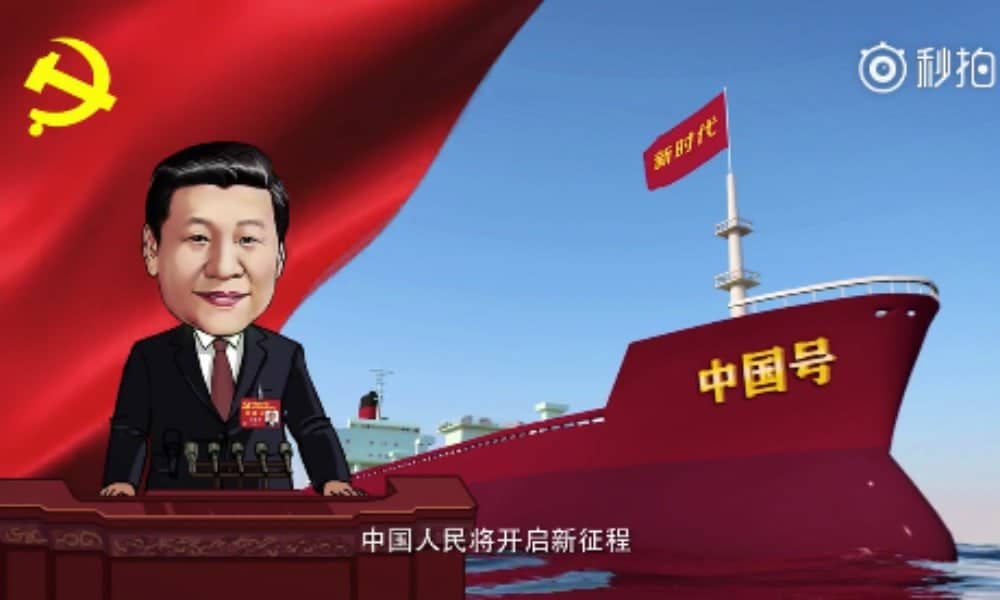
PREMIUM CONTENT ARTICLE
In an era where China’s young generations are practically glued to their smartphone screens, China’s propaganda departments are stepping up their game. Online animated videos and gifs use bright colors, simple design, and a very likable Xi to deliver strong political messages.
The speech that was delivered by president Xi Jinping at the APEC summit last week made its rounds on Chinese social media this Tuesday – not as a video, but as an animated cartoon.
The APEC Economic Leaders’ Meeting took place in Vietnam’s Da Nang from November 10-11, and was attended by international world leaders such as Japanese Prime Minister Shinzo Abe, American President Donald Trump, and South Korean President Moon Jae-in.
As one of the keynote speakers to the APEC CEO summit, Xi talked about his views on the Asian region’s future. The speech was especially momentous since it marked Xi’s first public address at an international multilateral meeting since the conclusion of the 19th National Congress of the Communist Party of China.
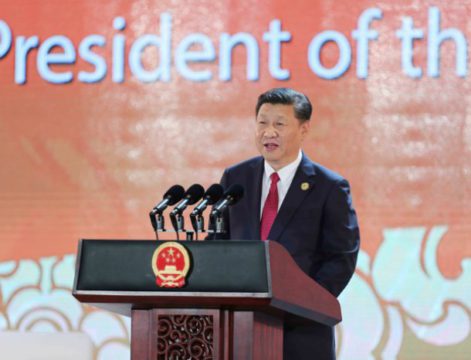
In his address, Xi spoke about China’s commitment to regional multilateralism and open economic globalization, and the importance of promoting inclusive development.
The animated cartoon version of the speech presents China as a leader in the region, with Xi as the main cartoon character. It was widely shared on Chinese social media by state media outlets for the past few days, at a time when cartoons and gifs seem to have become the new way of communicating Xi’s important visits and speeches to the online population.
Xi’s Animated Speech: China Leads the Way
The recent APEC cartoon that made its rounds on Weibo this week summarizes Xi Jinping’s speech in a 3,5 minute animation. It first shows a group of cranes, flying from China to the coastline of Vietnam’s Da Nang where Xi is holding his keynote speech.

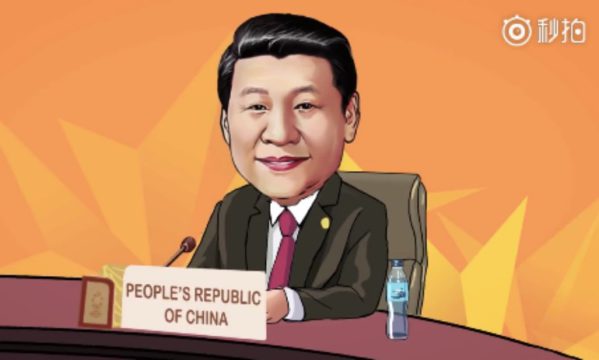
As Xi talks about the development of China and the start of the PRC’s “New Era,” this concept is visualized through a boat that is going forward under the leadership of Xi Jinping (see featured image).
The short animation video then shows another vessel by the name of “APEC” that is in rough weather, passing icebergs of “terrorism,” “natural disasters,” or “food safety issues.” But luckily, there is a lighthouse standing up to the huge waves – and it is marked by the flag of China.
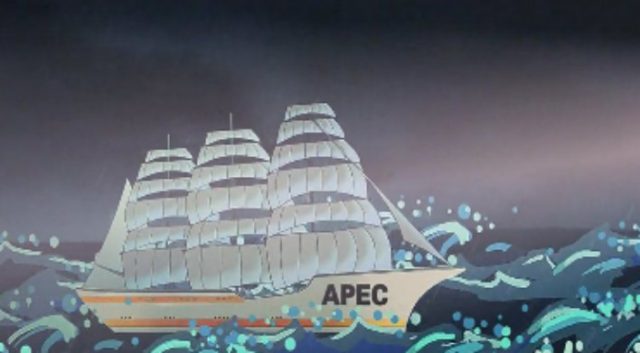
APEC: Asia-Pacific Economic Cooperation.


China is a stable lighthouse amidst the wild waves.
While the audio from Xi’s speech continues throughout the animation, talking about stability in the region, the cartoon presents the APEC group of leaders and Xi meeting with various leaders, leading to the final part that shows a world connected through boats, trains, airplanes, and the internet.
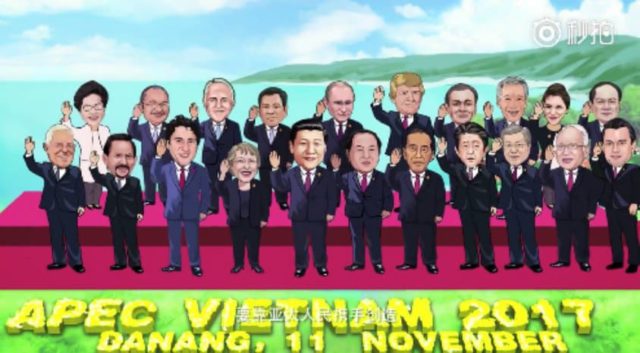
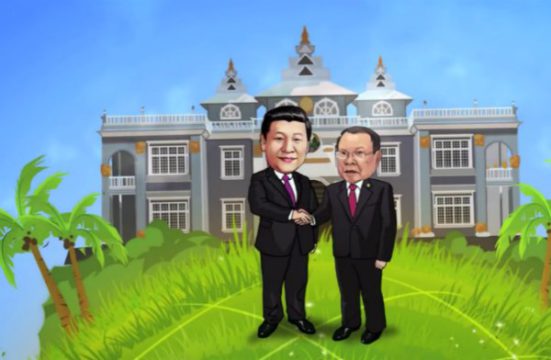
The very last fragment of the animation shows a fleet of boats going forward, “together building a better tomorrow for the Asia-Pacific,” with the leading boat carrying the Chinese flag.
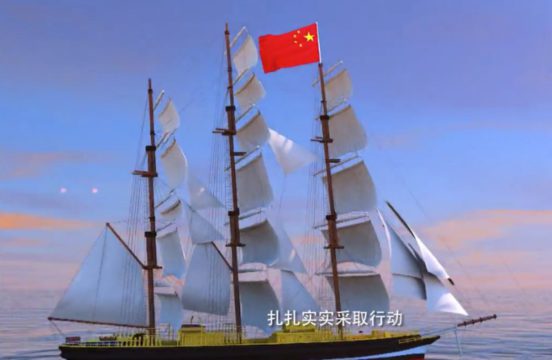

The animation was shared on video platform Miaopai and Weibo by state media such as CCTV (@央视网), Global Times (@环球网), China Economy (@中国经济网), and others.
Xi Jinping the Cartoon
It is not the first time that the cartoon image of President Xi is propagated online by Chinese state media. Over the past years, various key political concepts, events, and ideological messages have been spread online through animations, with a central role for Xi Jinping.
This trend became particularly apparent earlier this year during the launch of the Belt and Road Initiative and during the 19th National Party Congress; both crucial moment for Beijing’s top leadership in 2017.
Xi Jinping was first launched as a cartoon image in 2013, when a video titled ‘How a Political Leader was Tempered’ (领导人是怎样炼成的) went viral online. At the time , Chinese state media reported that the identity of the video’s author “remained unknown.”
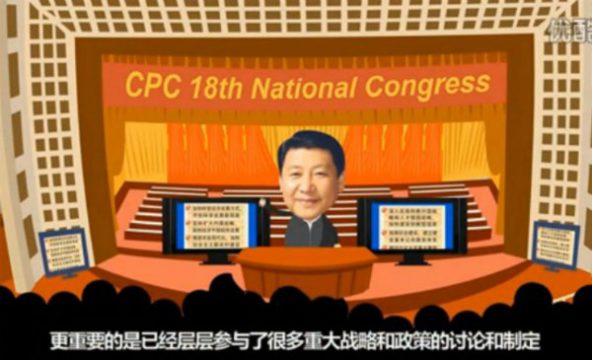
Xi first appeared as a cartoon in 2013.
But not long after this success, the first official release of a Xi Jinping cartoon followed. The series ‘Where did Xi’s Time Go?’ (习主席的时间都去哪了) was designed by media outlet Qianlong.com, and was propagated on major websites as well as new apps.
“More attractive than text news, the comic graphic news could reach readers’ heart and it suits modern reading habits,” the chief editor of Qianlong proudly said about the Xi cartoon.
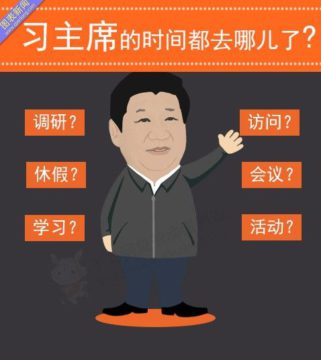
‘Where did Xi’s time go?’ was issued in 2013.
In 2014, another cartoon series of Xi Jinping was released by Chinese state media. According to People’s Daily, the image of cartoon Xi, drawn by cartoonist Jiao Haiyang (焦海洋), made it possible for the media to depict the country’s leader in a “fun and vivid way”, showing the President as “modest,” “approachable,” and “in touch with the people.”
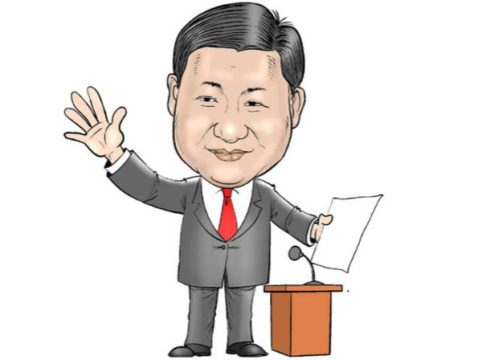
Xi Jinping by Jiao Haiyang for People’s Daily in 2014.
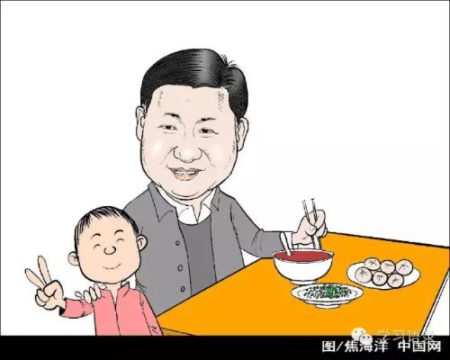
Xi eats baozi with the people. By Jiao Haiyang.
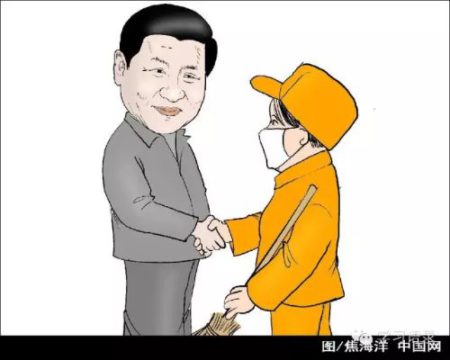
Xi Jinping meets a sanitation worker. By Jiao Haiyang.
In 2015, Xi made another return as a cartoon hero fighting corruption. The cartoon, uploaded to Youku by the mysterious ‘Chaoyang Studios,’ was widely shared by state media outlets such as People’s Daily (Gan 2015).
The exposure of Xi as a cartoon image increased thereafter in 2016 and 2017, with China Daily even launching a ‘cartoon commentary’ section. The ‘cartoon commentary’ section posts short animations of Xi Jinping during and after important political events, such as Xi’s Europe-Asia tour in June 2016, the Central Asia tour in June of 2017 or the Hong Kong visit in July.

‘Cartoon commentary’ from China Daily 2016: Xi’s Europe-Asia Tour.
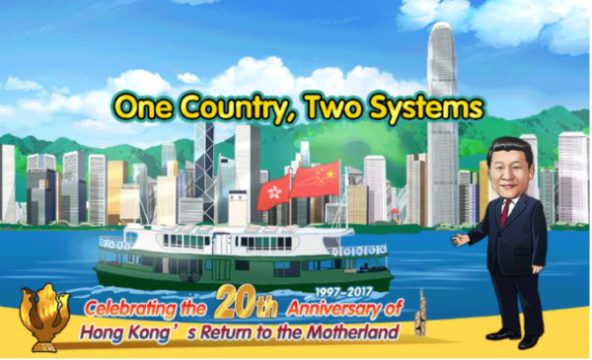
China Daily ‘cartoon commentary’ during Xi’s visit to Hong Kong in July 2017.
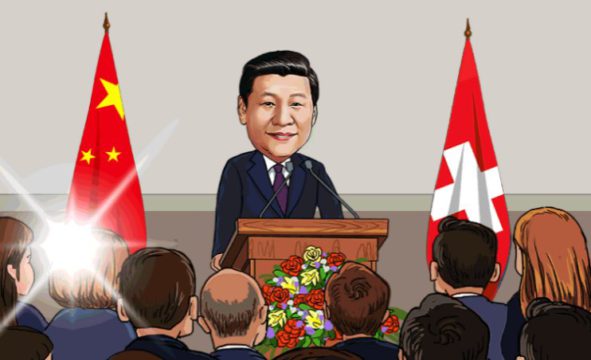
Most of the animated Xi cartoons that are widely shared on Chinese social media over the recent two years, including the official media ‘cartoon commentaries’, have been credited to a cartoonist named Liao Tingting (廖婷婷).
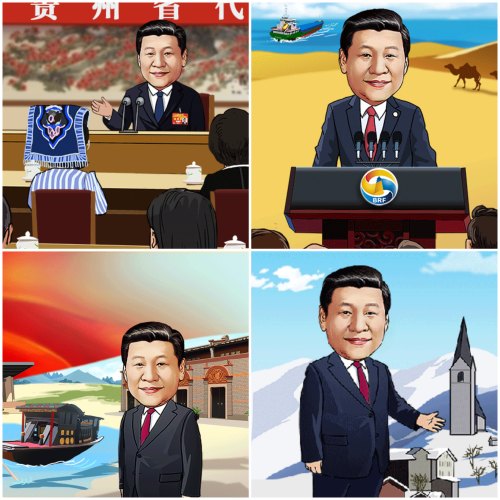
Xi Jinping by Liao Tingting.
‘Liao’s’ cartoons have a distinct style that is different from that of Jiao Haiyang or the Qianlong designers; Xi always has the same friendly face, which is relatively big for his body. The cartoons have bright colors and often have a simplicity to them which is comparable to the drawings in children’s books.
‘Propaganda Poster’ in the Social Media Age
Colorful images depicting important events or developments, often with a special focus on Mao Zedong, have played an important role in Chinese state propaganda since the founding of the PRC in 1949. The propaganda poster was an especially relevant medium within this type of state-sponsored propaganda art. With bright colors and powerful images, posters could easily grab the attention of the people, and could also transmit messages to the many illiterate Chinese (Landsberger 2001, 541; Van der Heijden&Landsberger 2008).
But in an era of fast online media and smartphone-scrolling youth, Chinese leaders are changing their propaganda tactics. As noted by Chow (2017) in The Diplomat:
“China is hoping to reinforce belief in the Communist Party, Chinese nationalism, and socialist values through social media. The ruling party fears that it is losing the battle for hearts and minds – particularly among Internet-savvy millennials who have grown up with Western movies, music, and television.”
Besides other new ways to disseminate political messages (such as rap music, mobile games), short animated cartoons or gifs are now an important vehicle for propaganda; they can communicate strong audiovisual messages in bite-sized chunks, making it easy to digest for an audience that is overwhelmed by online information and is not interested in listening to hour-long speeches.
Although the step from propaganda poster to online animation seems big, the idea remains the same: using bright colors and simple design to attract people’s attention and communicate a strong message through a medium that can be easily placed in many locations, reaching a great number of people.
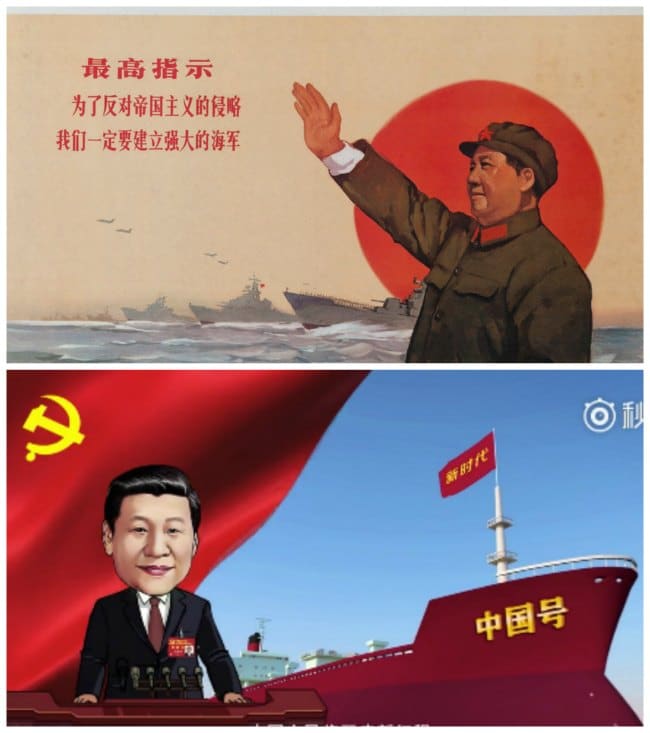
Besides communicating messages about China’s development and its role in the world today, state-sponsored Xi cartoons also convey a different message. Namely that Xi Jinping is a very likable and approachable leader.
The manner in which this message is conveyed matters greatly: the control should lie with Chinese authorities. When Chinese netizens compared President Xi to Winnie the Pooh, images of the friendly bear were censored soon after they went viral.
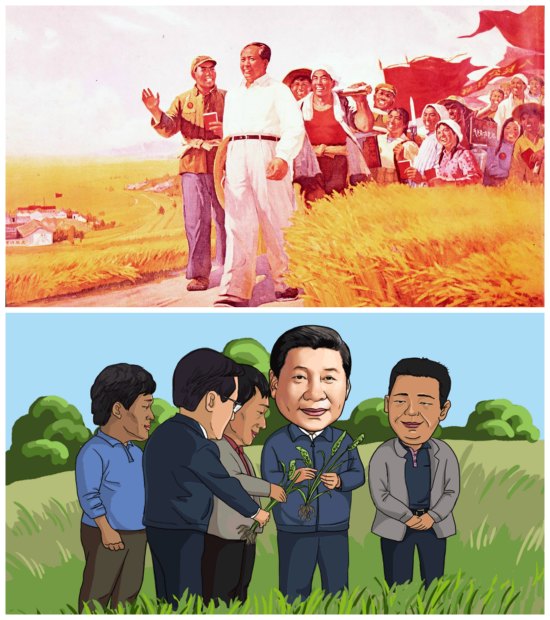
On Weibo, the animated cartoons of Xi’s speeches and important moments already seem to have become a normal part of the everyday social media landscape. While the reactions to the first series were generally positive, with netizens calling them “so cute” (好萌), the later videos seem to have become accepted as just another way for state media to communicate news to the people.
‘Xi the cartoon’ has become part of netizens’ daily online-scrolling routines. In this regard, propaganda departments have succeeded in bringing a likable and approachable Xi “in touch with the people.”
By Manya Koetse
Follow @whatsonweibo
References & Further Reading
Chow, Eugene. 2017. “China’s Propaganda Goes Viral.” The Diplomat, June 29 https://thediplomat.com/2017/06/chinas-propaganda-goes-viral/ [14.11.17].
Creemers, Rogier. 2017. “Cyber China: Upgrading Propaganda, Public Opinion Work and Social Management for the Twenty-First Century.” Journal of Contemporary China (26): 85-100.
Gan, Nectar. 2015. “Cartoon Xi Jinping Returns in New Animated Adventures.” South China Morning Post, February 21 http://www.scmp.com/news/china/article/1719881/cartoon-xi-jinping-returns-new-animated-adventures [14.11.17].
Landsberger, Stefan R. 2001. “Learning by What Example? Educational Propaganda in Twenty-first Century China.” Critical Asian Studies 33(4): 541-571.
Van der Heijden, Marien & Stefan Landsberger. 2008. Chinese Propaganda Posters. Amsterdam: International Institute of Social History. Available online at http://www.iisg.nl/publications/chineseposters.pdf [14.11.17].
Spotted a mistake or want to add something? Please let us know in comments below or email us.
©2017 Whatsonweibo. All rights reserved. Do not reproduce our content without permission – you can contact us at info@whatsonweibo.com.
Manya Koetse is the founder and editor-in-chief of whatsonweibo.com. She is a writer, public speaker, and researcher (Sinologist, MPhil) on social trends, digital developments, and new media in an ever-changing China, with a focus on Chinese society, pop culture, and gender issues. She shares her love for hotpot on hotpotambassador.com. Contact at manya@whatsonweibo.com, or follow on Twitter.

Also Read
China Arts & Entertainment
Going All In on Short Streaming: About China’s Online ‘Micro Drama’ Craze
For viewers, they’re the ultimate guilty pleasure. For producers, micro dramas mean big profit.
Published
3 weeks agoon
March 26, 2024By
Ruixin Zhang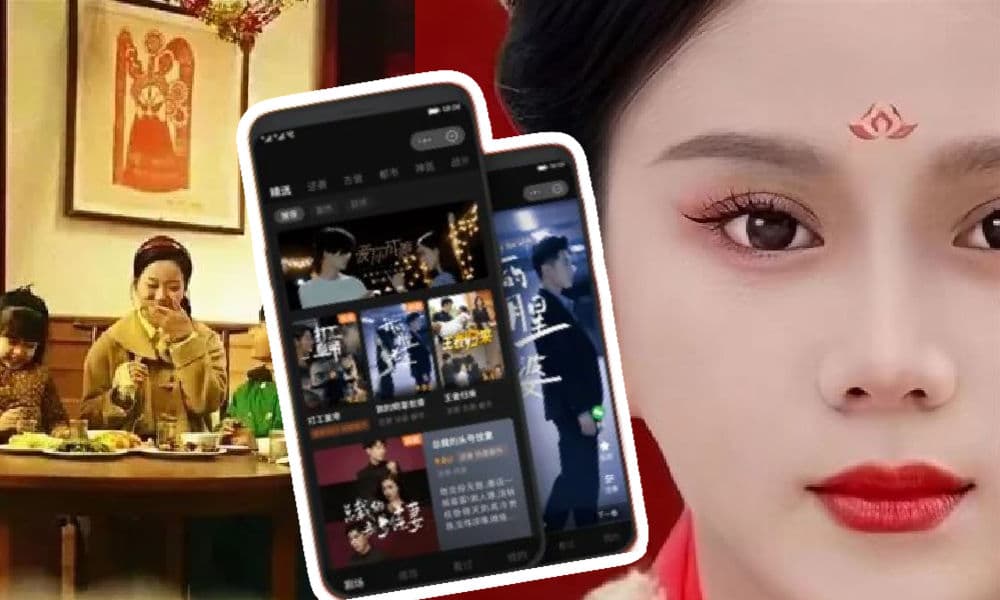
PREMIUM CONTENT
Closely intertwined with the Chinese social media landscape and the fast-paced online entertainment scene, micro dramas have emerged as an immensely popular way to enjoy dramas in bite-sized portions. With their short-format style, these dramas have become big business, leading Chinese production studios to compete and rush to create the next ‘mini’ hit.
In February of this year, Chinese social media started flooding with various hashtags highlighting the huge commercial success of ‘online micro-short dramas’ (wǎngluò wēiduǎnjù 网络微短剧), also referred to as ‘micro drama’ or ‘short dramas’ (微短剧).
Stories ranged from “Micro drama screenwriters making over 100k yuan [$13.8k] monthly” to “Hengdian building earning 2.8 million yuan [$387.8k] rent from micro dramas within six months” and “Couple earns over 400 million [$55 million] in a month by making short dramas,” all reinforcing the same message: micro dramas mean big profits. (Respectively #短剧爆款编剧月入可超10万元#, #横店一栋楼半年靠短剧租金收入280万元#, #一对夫妇做短剧每月进账4亿多#.)
Micro dramas, taking China by storm and also gaining traction overseas, are basically super short streaming series, with each episode usually lasting no more than two minutes.
From Horizontal to Vertical
Online short dramas are closely tied to Chinese social media and have been around for about a decade, initially appearing on platforms like Youku and Tudou. However, the genre didn’t explode in popularity until 2020.
That year, China’s State Administration of Radio, Film, and Television (SARFT) introduced a “fast registration and filing module for online micro dramas” to their “Key Online Film and Television Drama Information Filing System.” Online dramas or films can only be broadcast after obtaining an “online filing number.”
Chinese streaming giants such as iQiyi, Tencent, and Youku then began releasing 10-15 minute horizontal short dramas in late 2020. Despite their shorter length and faster pace, they actually weren’t much different from regular TV dramas.
Soon after, short video social platforms like Douyin (TikTok) and Kuaishou joined the trend, launching their own short dramas with episodes only lasting around 3 minutes each.
Of course, Douyin wouldn’t miss out on this trend and actively contributed to boosting the genre. To better suit its interface, Douyin converted horizontal-screen dramas into vertical ones (竖屏短剧).
Then, in 2021, the so-called mini-program (小程序) short dramas emerged, condensing each episode to 1-2 minutes, often spanning over 100 episodes.
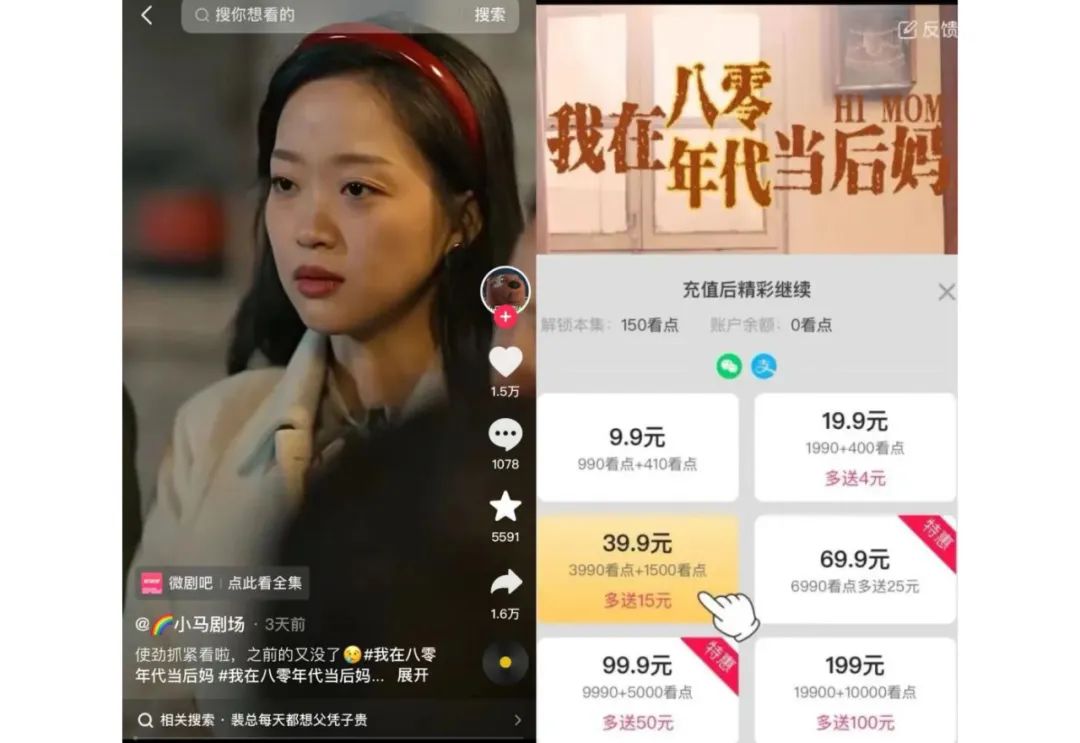
These short dramas are advertised on platforms like Douyin, and when users click, they are directed to mini-programs where they need to pay for further viewing. Besides direct payment revenue, micro dramas may also bring in revenue from advertising.
‘Losers’ Striking Back
You might wonder what could possibly unfold in a TV drama lasting just two minutes per episode.
The Chinese cultural media outlet ‘Hedgehog Society’ (刺猬公社) collected data from nearly 6,000 short dramas and generated a word cloud based on their content keywords.
In works targeted at female audiences, the most common words revolve around (romantic) relationships, such as “madam” (夫人) and “CEO” (总裁). Unlike Chinese internet novels from over a decade ago, which often depicted perfect love and luxurious lifestyles, these short dramas offer a different perspective on married life and self-discovery.
According to Hedgehog Society’s data, the frequency of the term “divorce” (离婚) in short dramas is ten times higher than “married” (结婚) or “newlyweds” (新婚). Many of these dramas focus on how the female protagonist builds a better life after divorce and successfully stands up to her ex-husband or to those who once underestimated her — both physically and emotionally.
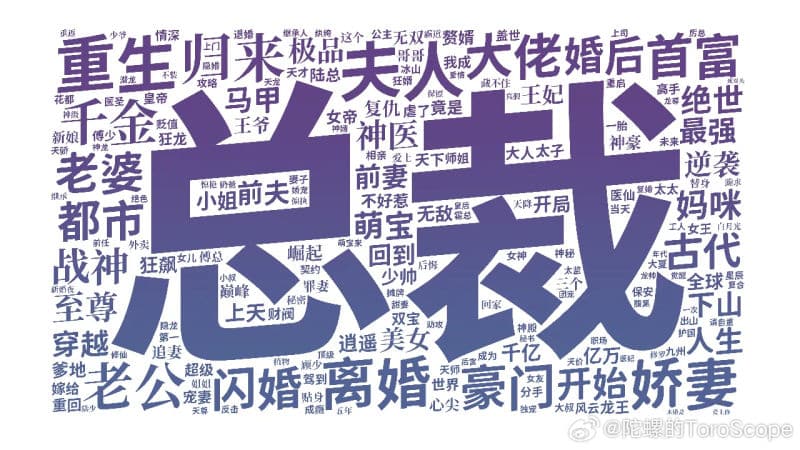
One of the wordclouds by 刺猬公社.
In male-oriented short dramas, the pursuit of power is a common theme, with phrases like “the strongest in history” (史上最强) and “war god” (战神) frequently mentioned. Another surprising theme is “matrilocal son” (赘婿), the son-in-law who lives with his wife’s family. In China, this term is derogatory, particularly referring to husbands with lower economic income and social status than their wives, which is considered embarrassing in traditional Chinese views. However, in these short dramas, the matrilocal son will employ various methods to earn the respect of his wife’s family and achieve significant success.
Although storylines differ, a recurring theme in these short dramas is protagonists wanting to turn their lives around. This desire for transformation is portrayed from various perspectives, whether it’s from the viewpoint of a wealthy, elite individual or from those with lower social status, such as divorced single women or matrilocal son-in-laws. This “feel-good” sentiment appears to resonate with many Chinese viewers.
Cultural influencer Lu Xuyu (@卢旭宁) quoted from a forum on short dramas, explaining the types of short dramas that are popular: Men seek success and admiration, and want to be pursued by beautiful women. Women seek romantic love or are still hoping the men around them finally wake up. One netizen commented more bluntly: “They are all about the counterattack of the losers (屌丝逆袭).”
The word used here is “diaosi,” a term used by Chinese netizens for many years to describe themselves as losers in a self-deprecating way to cope with the hardships of a competitive life, in which it has become increasingly difficult for Chinese youths to climb the social ladder.
Addicted to Micro Drama
By early 2024, the viewership of China’s micro dramas had soared to 120 million monthly active users, with the genre particularly resonating with lower-income individuals and the elderly in lower-tier markets.
However, short dramas also enjoy widespread popularity among many young people. According to data cited by Bilibili creator Caoxiaoling (@曹小灵比比叨), 64.9% of the audience falls within the 15-29 age group.
For these young viewers, short dramas offer rapid plot twists, meme-worthy dialogues, condensing the content of several episodes of a long drama into just one minute—stripping away everything except the pure “feel-good” sentiment, which seems rare in the contemporary online media environment. Micro dramas have become the ultimate ‘guilty pleasure.’

Various micro dramas, image by Sicomedia.
Even the renowned Chinese actress Ning Jing (@宁静) admitted to being hooked on short dramas. She confessed that while initially feeling “scammed” by the poor production and acting, she became increasingly addicted as she continued watching.
It’s easy to get hooked. Despite criticisms of low quality or shallowness, micro dramas are easy to digest, featuring clear storylines and characters. They don’t demand night-long binge sessions or investment in complex storylines. Instead, people can quickly watch multiple episodes while waiting for their bus or during a short break, satisfying their daily drama fix without investing too much time.
Chasing the gold rush
During the recent Spring Festival holiday, the Chinese box office didn’t witness significant growth compared to previous years. In the meantime, the micro drama “I Went Back to the 80s and Became a Stepmother” (我在八零年代当后妈), shot in just 10 days with a post-production cost of 80,000 yuan ($11,000), achieved a single-day revenue exceeding 2 million yuan ($277k). It’s about a college girl who time-travels back to the 1980s, reluctantly getting married to a divorced pig farm owner with kids, but unexpectedly falling in love.
Despite its simple production and clichéd plot, micro dramas like this are drawing in millions of viewers. The producer earned over 100 million yuan ($13 million) from this drama and another short one.
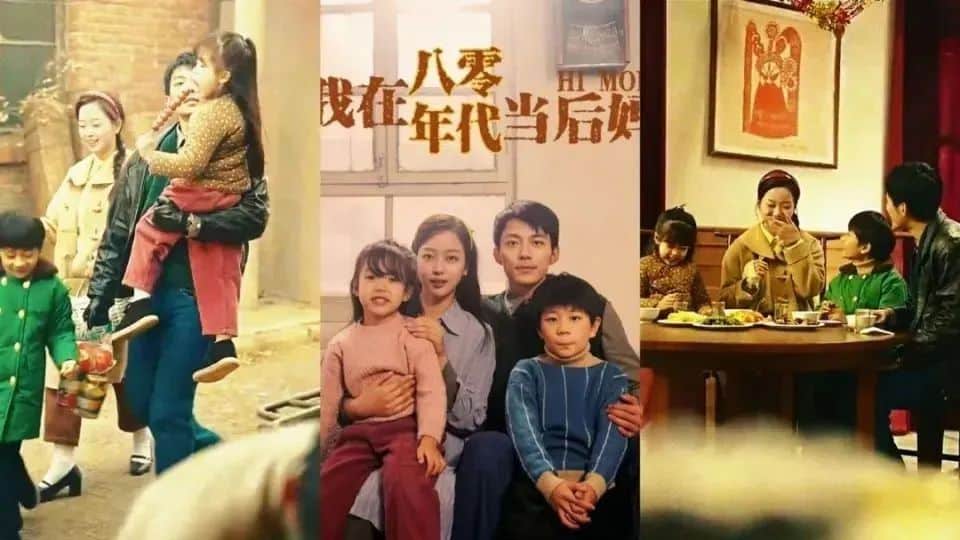
“I Went Back to the 80s and Became a Stepmother” (我在八零年代当后妈).
The popularity of short dramas, along with these significant profits, has attracted many people to join the short drama industry. According to some industry insiders, a short drama production team often involves hundreds or even thousands of contributors who help in writing scripts. These contributors include college students, unemployed individuals, and online writers — seemingly anyone can participate.
By now, Hengdian World Studios, the largest film and television shooting base in China, is already packed with crews filming short dramas. With many production teams facing a shortage of extras, reports have surfaced indicating significant increases in salaries, with retired civil workers even being enlisted as actors.
Despite the overwhelming success of some short dramas like “I Went Back to the 80s and Became a Stepmother,” it is not easy to replicate their formula. The screenwriter of the time-travel drama, Mi Meng (@咪蒙的微故事), is a renowned online writer who is very familiar with how to use online strategies to draw in more viewers. For many average creators, their short drama production journey is much more difficult and less fruitful.
But with low costs and potentially high returns, even if only one out of a hundred productions succeeds, it could be sufficient to recover the expenses of the others. This high-stakes, cutthroat competition poses a significant challenge for smaller players in the micro drama industry – although they actually fueled the genre’s growth.
As more scriptwriters and short dramas flood the market, leading to content becoming increasingly similar, the chances of making profits are likely to decrease. Many short drama platforms have yet to start generating net profits.
This situation has sparked concerns among netizens and critics regarding the future of short dramas. Given the genre’s success and intense competition, a transformation seems inevitable: only the shortest dramas that cater to the largest audiences will survive.
In the meantime, however, netizens are enjoying the hugely wide selection of micro dramas still available to them. One Weibo blogger, Renmin University Professor Ma Liang (@学者马亮), writes: “I spent some time researching short videos and watched quite a few. I must admit, once you start, you just can’t stop. ”
By Ruixin Zhang, edited with further input by Manya Koetse
Independently reporting China trends for over a decade. Like what we do? Support us and get the story behind the hashtag by subscribing:
Spotted a mistake or want to add something? Please let us know in comments below or email us. First-time commenters, please be patient – we will have to manually approve your comment before it appears.
©2024 Whatsonweibo. All rights reserved. Do not reproduce our content without permission – you can contact us at info@whatsonweibo.com.
China Brands, Marketing & Consumers
Tick, Tock, Time to Pay Up? Douyin Is Testing Out Paywalled Short Videos
Is content payment a new beginning for the popular short video app Douyin (China’s TikTok) or would it be the end?
Published
5 months agoon
November 18, 2023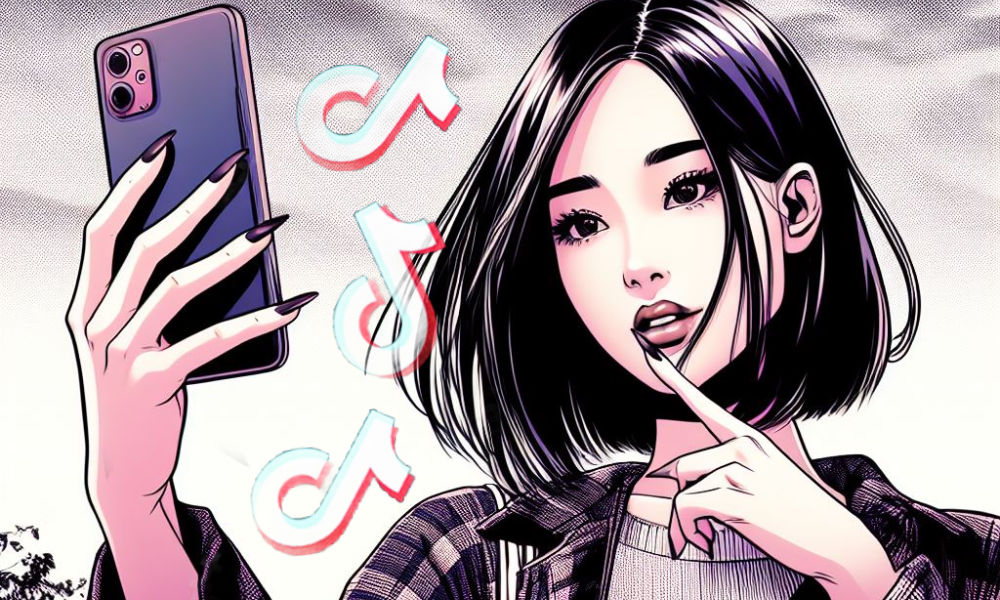
The introduction of a Douyin novel feature, that would enable content creators to impose a fee for accessing their short video content, has sparked discussions across Chinese social media. Although the feature would benefit creators, many Douyin users are skeptical.
News that Chinese social media app Douyin is rolling out a new feature which allows creators to introduce a paywall for their short video content has triggered online discussions in China this week.
The feature, which made headlines on November 16, is presently in the testing phase. A number of influential content creators are now allowed to ‘paywall’ part of their video content.
Douyin is the hugely popular app by Chinese tech giant Bytedance. TikTok is the international version of the Chinese successful short video app, and although they’re often presented as being the same product, Douyin and Tiktok are actually two separate entities.
In addition to variations in content management and general usage, Douyin differs from TikTok in terms of features. Douyin previously experimented with functionalities such as charging users for accessing mini-dramas on the platform or the ability to tip content creators.
The pay-to-view feature on Douyin would require users to pay a certain fee in Douyin coins (抖币) in order to view paywalled content. One Douyin coin is equivalent to 0.1 yuan ($0,014). The platform itself takes 30% of the income as a service charge.
According to China Securities Times or STCN (证券时报网), Douyin insiders said that any short video content meeting Douyin’s requirements could be set as “pay-per-view.”
Creators, who can set their own paywall prices, should reportedly meet three criteria to qualify for the pay-to-view feature: their account cannot have any violation records for a period of 90 days, they should have at least 100,000 followers, and they have to have completed the real-name authentication process.
On Douyin and Weibo, Chinese netizens express various views on the feature. Many people do not think it would be a good idea to charge money for short videos. One video blogger (@小片片说大片) pointed out the existing challenge of persuading netizens to pay for longer videos, let alone expecting them to pay for shorter ones.
“The moment I’d need to pay money for it, I’ll delete the app,” some commenters write.
This statement appears to capture the prevailing sentiment among most internet users regarding a subscription-based Douyin environment. According to a survey conducted by the media platform Pear Video, more than 93% of respondents expressed they would not be willing to pay for short videos.

An online poll by Pear Video showed that the majority of respondents would not be willing to pay for short videos on Douyin.
“This could be a breaking point for Douyin,” one person predicts: “Other platforms could replace it.” There are more people who think it would be the end of Douyin and that other (free) short video platforms might take its place.
Some commenters, however, had their own reasons for supporting a pay-per-view function on the platform, suggesting it would help them solve their Douyin addiction. One commenter remarked, “Fantastic, this might finally help me break free from watching short videos!” Another individual responded, “Perhaps this could serve as a remedy for my procrastination.”
As discussions about the new feature trended, Douyin’s customer service responded, stating that it would eventually be up to content creators whether or not they want to activate the paid feature for their videos, and that it would be up to users whether or not they would be interested in such content – otherwise they can just swipe away.
Another social media user wrote: “There’s only one kind of video I’m willing to pay for, and it’s not on Douyin.”
By Manya Koetse
Get the story behind the hashtag. Subscribe to What’s on Weibo here to receive our newsletter and get access to our latest articles:
Spotted a mistake or want to add something? Please let us know in comments below or email us. First-time commenters, please be patient – we will have to manually approve your comment before it appears.
©2023 Whatsonweibo. All rights reserved. Do not reproduce our content without permission – you can contact us at info@whatsonweibo.com.
Subscribe

Chengdu Disney: The Quirkiest Hotspot in China

Where to Eat and Drink in Beijing: Yellen’s Picks

Weibo Watch: Burning BMWs

More than Malatang: Tianshui’s Recipe for Success

The Chinese Viral TikTok Song Explained (No, It’s Not About Samsung)

The ‘Two Sessions’ Suggestions: Six Proposals Raising Online Discussions

A Snowball Effect: How Cold Harbin Became the Hottest Place in China

Jia Ling Returns to the Limelight with New “YOLO” Movie and 110-Pound Weight Loss Announcement

Top 9 Chinese Movies to Watch This Spring Festival Holiday

Party Slogan, Weibo Hashtag: “The Next China Will Still Be China”

From Pitch to Politics: About the Messy Messi Affair in Hong Kong (Updated)

Weibo Watch: Frogs in Wells

Looking Back on the 2024 CMG Spring Festival Gala: Highs, Lows, and Noteworthy Moments

Two Years After MU5735 Crash: New Report Finds “Nothing Abnormal” Surrounding Deadly Nose Dive

More than Malatang: Tianshui’s Recipe for Success
Get in touch
Would you like to become a contributor, or do you have any tips or suggestions? Get in touch here!
Popular Reads
-

 China Insight1 month ago
China Insight1 month agoThe ‘Two Sessions’ Suggestions: Six Proposals Raising Online Discussions
-

 China Insight3 months ago
China Insight3 months agoA Snowball Effect: How Cold Harbin Became the Hottest Place in China
-

 China Arts & Entertainment3 months ago
China Arts & Entertainment3 months agoJia Ling Returns to the Limelight with New “YOLO” Movie and 110-Pound Weight Loss Announcement
-

 China Arts & Entertainment2 months ago
China Arts & Entertainment2 months agoTop 9 Chinese Movies to Watch This Spring Festival Holiday




